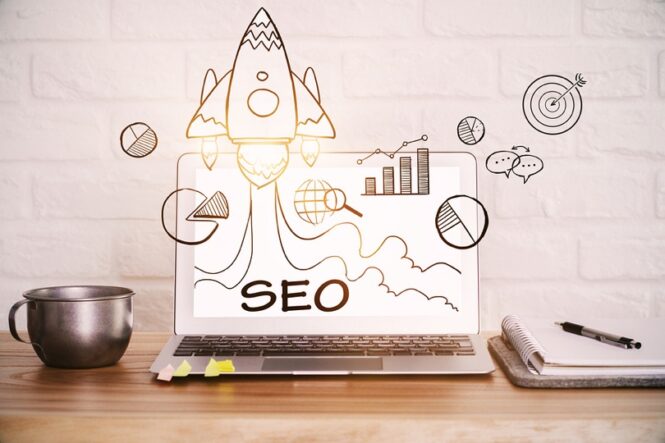You can make money on Shopify, anyone can, but only if you actually know what you’re doing. That’s what ultimately separates the winners from the failures: the willingness to learn and to treat it like the serious business that it is. Speaking of which, one of the most important things you can learn when it comes to dropshipping business is how to get organic SEO traffic to your site, and how to convert that traffic to sales. Should you be interested more in learning about this then please visit the AIAD website.
Site Speed

Believe it or not, Google and other search engines take site speed into account when they crawl your site and determine the ranking of its pages. So, the big question is, how to improve your store online loading speed.
Step one is to first test your site’s speed. There are many free tools that can do this for you in a matter of seconds such as Pingdom. Once you get an idea of how fast your site is, and feel that you need to make improvements, you’ll want to use tools like Tiny PNG to make your images load faster, or Accelerated Mobile Pages which will help you site load faster in general.
Identify and Use Keywords Correctly
There is no point in ranking in Google or the other search engines if you aren’t ranked for terms that send people to your site ready to buy. Get inside the minds of your potential customers and figure out what they would type into a search engine if they wanted to buy what you have to offer. If you want to take the easy way out, there are keyword tools that can help, but they will cost you.
When implementing keywords on your web pages make sure that your keywords actually make sense. Sure some keywords may seem attractive, but if it’s something along the lines of “How to start a podcast Shopify” then you’ll have to get pretty creative about how you include them on your site. You can click here to find our more.
Activate SSL (Secure Socket Layer)

Privacy and safety are a big factor for trust online these days, and people will only buy from you if they trust you. This means that you need to activate your SSL to show people that your site is safe if you don’t your site could even end up being blocked by security systems like McAfee Web Advisory.
Activating your SSL for Shopify is easy and can even be done right there on your dashboard. Just go to Sales Channels, then Online Store, then Domain. Alternatively, you could do this through your hosting service, or another third party if you want. In any case, the sooner you get your SSL turned on, the better.
Is SEO Really Worth It?
It is true that setting up all the SEO stuff you need to make your site a winner does take time, however, not doing it will just handicap your business. If you really don’t want to bother with all this, you can, of course, hire an SEO firm to do it for you. Regardless, make sure that you optimize your site SEO one way or another. Getting targeted “buyer-ready” search traffic can be just what you need to take your Shopify business to the next level.
The main thing to remember about SEO is that not having it is essentially giving up a certain percentage of your target audience to your competition. If you want to truly be competitive online, and make as many sales as possible, then SEO is absolutely essential. Neglecting SEO for your web site is about the same as forgetting to change the “closed” sign to “open” at a real-life store.
How Do I Optimize My Shopify Store with SEO?

Getting started with SEO is simple, but as mentioned before, it can be a complex task. First thing’s first though, you want to identify the keywords that your customers are using to find your site. You can do this a variety of ways, such as looking at your site’s analytics which you should have installed, using a keyword tool to see which related keywords are the most popular, or just doing a little brainstorming on your own.
Regardless of the method, once you have the keywords, then you can start with the on-page SEO. This consists of making sure that each page has the correct keywords that you’re trying to target. For example, a page that’s selling dog collars will need to have related keywords that people use when searching for dog collars to buy. And yes, keep that in mind, you want “buyer-ready” keywords, not just keywords that target people looking for dog collar info in general.
The Technical Aspect of On-Page SEO
While on-page SEO starts with keywords, there is a much more technical side to it as well. Google’s algorithm is a lot more advanced than it used to be and it now takes into account things such as how fast your store online loads, how easy it is to navigate, and the overall site map and internal link structure. This may sound complicated, but thankfully, the Shopify platform automatically takes care of most of this.
Another great thing about the Shopify platform is the fact that it creates mobile-friendly sites for you or you can even make own store with store builder for Shopify! Thanks to the fact that doing searches on mobile is more common these days, Google gives a boost to mobile-friendly websites. In this way, is doing you a huge favor in making their templates mobile-friendly from the start and giving you a big SEO boost.
Developing an Off-Page SEO Strategy

Off-page SEO is a little trickier than on-page, but nothing that can’t be accomplished with careful planning. You can do this by creating a blog and linking to your own Shopify site where relevant, or by guest posting on other people’s blogs that are related in theme to your store.
The thing to remember is the fact that sites with higher “authority” give a bigger boost when linking to your store. This means that you should be trying to guest post on blogs that are either very popular or have been around for a while.
Pump Up Your Store with SEO
SEO is essential for your Shopify store to succeed. If you think that it’s too much to do yourself, then just take the easy way out and hire the pros to do it for you. No matter the case, you’ll make more money when you have a good SEO plan in place, making it a very good investment.
 Imagup General Magazine 2024
Imagup General Magazine 2024



